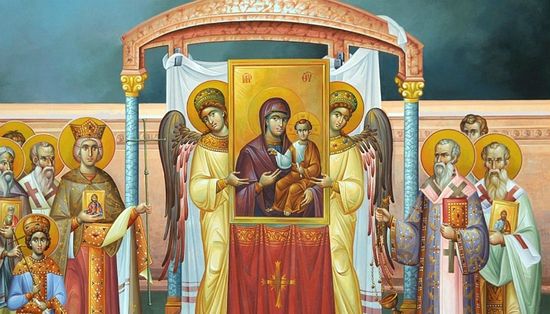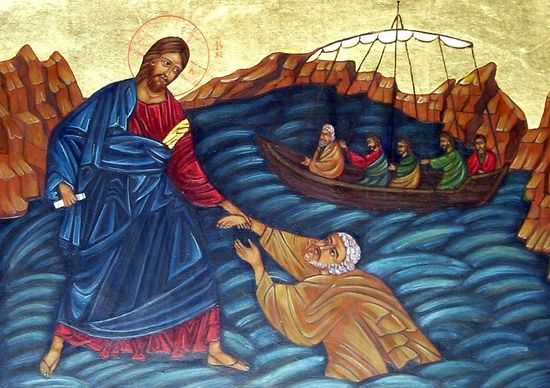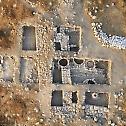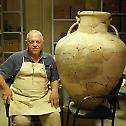Science
The Triumph of Jesus Christ in the Triumph of Orthodoxy
1. March 2015 - 2:41 The first Sunday of Great Lent is celebrated as the Triumph of Orthodoxy. This is connected with the victory of the iconodules (those who supported the veneration of sacred images) over the iconoclasts (those who opposed their veneration).
The first Sunday of Great Lent is celebrated as the Triumph of Orthodoxy. This is connected with the victory of the iconodules (those who supported the veneration of sacred images) over the iconoclasts (those who opposed their veneration).
The heart of the victory of Orthodoxy in the restoration of iconography—as well as our veneration of the same—is found in the incarnation of Jesus Christ. Christology is the beginning and end of all true theology, and whenever we get Christ wrong, we get everything else wrong.
“Fasting is walking on water”
27. February 2015 - 15:37 Orthodox Pastors on Great Lent
Orthodox Pastors on Great Lent
Orthodox Christians have begun the ascetic labor of Great Lent. Many have waited for this time of increased repentance with joy, but there are also those who look at it with dread. Pravoslavie.ru asked several priest of the Russian Orthodox Church to give us a few comforting words as we set out upon the holy forty-day fast.
Israel: Biblical Libnah Iron Age settlement from Kingdom of Judah "found" in Tel Burna
27. February 2015 - 10:00The Kingdom of Judah was a state established in the historical Land of Israel around 930 BC. It was known as the southern kingdom and included cities such as Jerusalem, Hebron, Lachish and Beersheba.
According to biblical accounts, Libnah was one of the places where the Israelites stopped during the Exodus, which subsequently became a town in the Kingdom of Judah.
THE GREAT LENT - A Week by Week Meaning
22. February 2015 - 11:27THE INSTITUTE OF LENT
There are institutes and symbols adopted by nations, churches or groups of men which represent certain ideals accumulated in the past. These institutes, that is precepts recognized as authoritative, and symbols represent the thoughts and feelings of those who created or adopted them and put in them all the experience of the past, often through struggle and sacrifice. A few feet of ribbon for instance, red, blue and white in color, have little value as is. But if one puts them in a certain pattern of stripes and stars, they become the flag of the United States and represent the ideals and unity of the people of America. The flag reminds us of the people's struggle for liberty. It represents the national unity which attained for them their rights as a people. The same could be said for the institutes of a nation, army or any group of people. These institutes are created by the people and are used by them in certain ways for certain aims. Some of these institutes are the means for achieving certain values and ideals. In the life of the Church of Christ there are many institutes created and maintained to meet the needs of the people - the Ecclesia. Among these is the Great Lent which falls within the year-cycle of the life of the Church before Pascha-Easter. Lent is the period of time for self-examination by the believer; of putting on the spiritual armor of the Militant Church; of applying the riches of prayers and almsgiving; of adopting deeply the meaning of repentance; of atonement and reconciliation with God Almighty.
Metropolitan Amfilohije Doctor HONORIS CAUSA of the Orthodox Spiritual Academy of St. Petersburg
12. February 2015 - 10:06Rector of the Orthodox Spiritual Academy of St. Petersburg Archbishop Ambrosius of Peterhof awarded Metropolitan Amfilohije of Montenegro and the Littoral with a doctor's cross and a diploma of Doctor Honoris Causa of this eminent church and educational institution, at the ceremony in St. Petersburg on 11 February 2015.
The high distinction was given to Metropolitan Amfilohije on 13 June 2014 by the decision of the Scientific Council of the Saint Petersburg Spiritual Academy, and was approved by Metropolitan Varsonufry of St. Petersburg and Ladosh. Many guests of the Academy, representatives of the church, scientific and cultural life of the northern Russian capital, among which was also Archbishop Jovan (Vranisovski) of Ohrid.






